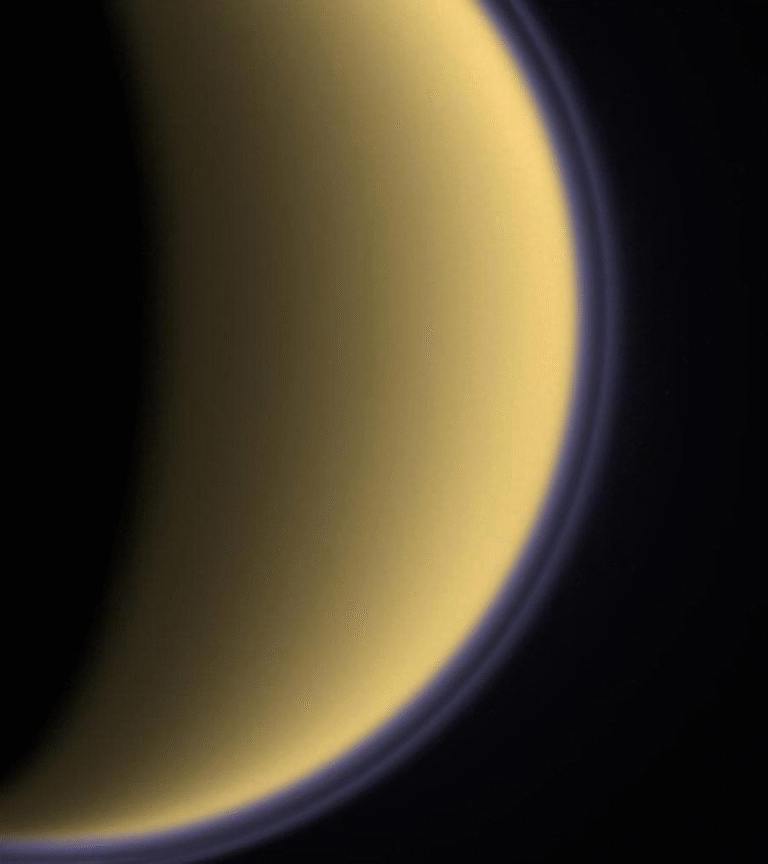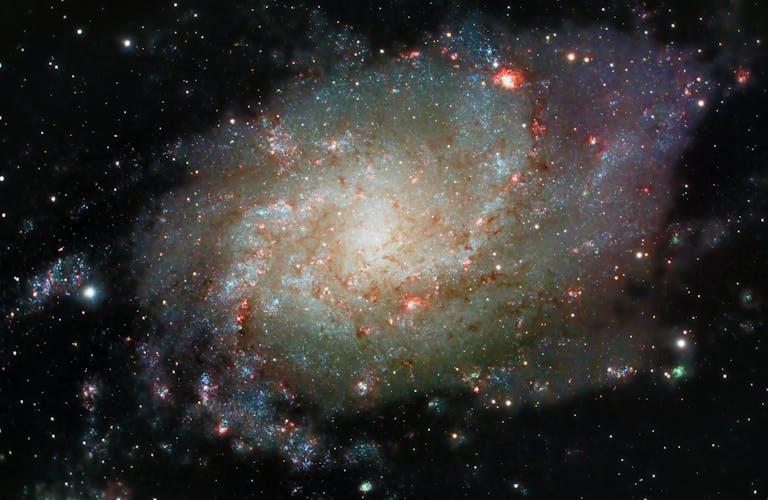Hubble Detects a White Dwarf Devouring a Pluto-Like Icy World

Astronomers have uncovered an extraordinary cosmic event: a white dwarf star named WD 1647+375 is actively consuming the frozen remains of a Pluto-like world. This discovery, made using the Hubble Space Telescope, provides some of the clearest evidence yet that icy, water-rich bodies exist outside our Solar System. These bodies, much like comets and dwarf planets in our own neighborhood, are believed to play a crucial role in delivering the ingredients for life.
In this article, we’ll go through the discovery in detail, cover all the key findings, and also explore some background information about white dwarfs, the Kuiper Belt, and why astronomers are so fascinated by volatile-rich bodies.
The Star at the Center of Attention: WD 1647+375
The star being studied is WD 1647+375, a white dwarf located about 260 light-years from Earth. A white dwarf is the remnant of a once-normal star that has gone through its full life cycle, shedding its outer layers and leaving behind a dense, Earth-sized core. Despite its small size, it packs the mass of a Sun-like star, making it extremely dense.
Most white dwarfs have atmospheres made primarily of hydrogen or helium. But WD 1647+375 stood out when astronomers used Hubble’s Cosmic Origins Spectrograph to examine it in ultraviolet light. The data revealed unusual chemical fingerprints in the star’s atmosphere — elements that should not be there unless they were recently deposited by external material.
What Hubble Found
Hubble’s ultraviolet spectroscopy revealed elements such as carbon, nitrogen, oxygen, and sulfur. These are volatile elements, meaning they evaporate at relatively low temperatures and are strongly associated with icy worlds. Typically, white dwarfs only show signatures of rocky debris — metals like calcium, magnesium, or iron — from shattered asteroids.
What makes this case special is the dominance of volatiles. In fact, the amount of nitrogen detected was striking: it made up about 5 percent of the mass of the material being absorbed. This is the highest nitrogen abundance ever recorded in white dwarf debris. On top of that, astronomers found about 84 percent more oxygen than would be expected if the object were purely rocky. Together, these results point to an icy, water-rich object.
The chemical profile closely resembles what we’d expect from Kuiper Belt objects in our Solar System, such as Pluto or nitrogen-rich comets. That’s why researchers believe the star is devouring a fragment of a Pluto-like world.
Size and Mass of the Object
The data show that the star has been accreting material for at least 13 years, with the material falling in at a rate of about 200,000 kilograms per second (roughly the mass of a blue whale every second).
From this accretion rate, scientists estimate that the disrupted body was at least 3 kilometers across. However, this is only a minimum value because accretion episodes can last for hundreds of thousands of years. In reality, the object could have been much larger — possibly 50 kilometers wide or more — and with a mass close to a quintillion kilograms.
Another interesting clue is the water-to-rock ratio. The data indicate that the object was about 64 percent water by mass, with a ratio of 2.45 water to rock. This is higher than most Kuiper Belt objects and suggests that the fragment came from the crust or mantle of a Pluto-like dwarf planet, rather than being just an ordinary comet.
Why This Is a First
Astronomers have seen many “polluted white dwarfs” before — stars whose atmospheres contain traces of accreted material from planets, asteroids, or comets. However, these usually show evidence of rocky debris, not icy material.
WD 1647+375 is the first unambiguous case of a hydrogen-atmosphere white dwarf accreting a body dominated by ices and volatiles. This discovery not only confirms the existence of such icy planetesimals outside our Solar System but also demonstrates that their material can survive long enough to eventually fall into a white dwarf.
Could It Be an Interstellar Object?
There is still some uncertainty about the origin of this icy fragment. It might have come from the star’s own planetary system, surviving through the violent evolution of its host star into a white dwarf. Alternatively, it could be an interstellar comet, captured from elsewhere in the galaxy.
At the moment, the chemical evidence does not decisively rule out either possibility. However, the composition’s similarity to Kuiper Belt objects suggests it is more likely a remnant from the star’s original system.
Why Nitrogen Matters
The detection of nitrogen is particularly important. Nitrogen is a volatile that plays a central role in chemistry linked to habitability. On Earth, nitrogen forms a large part of our atmosphere and is essential for life’s building blocks.
Finding nitrogen-rich icy bodies in other planetary systems strengthens the idea that the raw ingredients for life are widespread. It suggests that planetary systems across the galaxy may have similar reservoirs of volatile-rich bodies, capable of delivering water and essential elements to habitable worlds.
White Dwarfs as Cosmic Crime Scenes
Astronomers often describe white dwarfs as cosmic crime scenes. When a planet or planetesimal gets too close, the star’s gravity tears it apart. The debris falls into the star’s atmosphere, leaving behind chemical fingerprints.
By analyzing those fingerprints, scientists can reconstruct the identity of the “victim” — whether it was a rocky asteroid, a water-rich comet, or, as in this case, a fragment of a Pluto-like dwarf planet.
This method is one of the few direct ways astronomers can measure the composition of exoplanetary material, since most planets and small bodies are too faint or distant to study directly.
Broader Implications
The discovery has several key implications:
- Evidence of volatile-rich bodies: It shows that icy, water-bearing planetesimals are not unique to our Solar System.
- Potential for life ingredients: Since such bodies can deliver water and volatiles, their existence in other systems supports the idea that the ingredients for life are common throughout the galaxy.
- Survival through stellar evolution: It demonstrates that at least some icy objects can survive the tumultuous evolution of their host stars, from main sequence through red giant to white dwarf.
- Future investigations: Instruments like the James Webb Space Telescope may provide even more detailed insights, possibly detecting molecules such as water vapor or carbonates in these polluted white dwarfs.
Background: What Are White Dwarfs?
A white dwarf is the final evolutionary stage of most stars, including our Sun. When a Sun-like star exhausts its fuel, it expands into a red giant and then sheds its outer layers, leaving behind a dense, Earth-sized core.
White dwarfs are fascinating because, despite being small, they are incredibly dense. A teaspoon of white dwarf material would weigh tons on Earth. Over billions of years, they slowly cool and fade, eventually becoming black dwarfs.
Many white dwarfs are orbited by leftover planetary systems — debris disks, asteroids, comets, or even surviving planets. Sometimes, these remnants get destabilized and fall into the star, allowing astronomers to study their composition.
Background: Kuiper Belt Objects and Pluto-Like Worlds
The Kuiper Belt is a region beyond Neptune filled with icy bodies. Pluto, Eris, Haumea, and Makemake are the most famous, but there are countless smaller objects. These bodies are remnants from the early Solar System, made of a mix of rock and volatiles such as water, methane, and nitrogen ice.
When astronomers compare WD 1647+375’s debris to Pluto, they’re pointing out the nitrogen-rich, ice-heavy composition that resembles Pluto’s surface. On Pluto, nitrogen ice dominates the landscape, and water ice forms mountains and the underlying crust. The volatile-rich chemistry of the accreted debris makes the comparison compelling.
Why This Discovery Stands Out
Astronomers have long suspected that icy bodies like Pluto exist in other planetary systems, but they are notoriously hard to detect. They are small, faint, and far from their stars. Finding them indirectly through their chemical “pollution” in white dwarfs is a clever workaround.
This discovery gives direct evidence that such icy, Pluto-like objects are indeed present elsewhere in the galaxy, and that they can provide insights into the diversity of exoplanetary systems.
The Road Ahead
Future observations with JWST and upcoming telescopes may reveal more about icy debris around white dwarfs. In particular, infrared observations could pick out molecular signatures that Hubble’s ultraviolet spectroscopy cannot.
As astronomers continue to survey more white dwarfs, they may uncover additional cases of volatile-rich accretion. Over time, this could help build a picture of how common icy planetesimals are, and how often they survive stellar evolution.
Final Thoughts
The discovery of WD 1647+375 consuming a Pluto-like fragment is one of the most compelling pieces of evidence yet that icy, water-rich worlds are scattered across the galaxy. With nitrogen, oxygen, carbon, and sulfur detected in abundance, the case is strong for this being a volatile-rich body rather than a rocky asteroid.
Whether this fragment was part of the star’s own planetary system or an interstellar visitor remains uncertain, but either way, the implications are exciting. It tells us that the ingredients for life are widespread and that the processes that shaped our Solar System are not unique.





